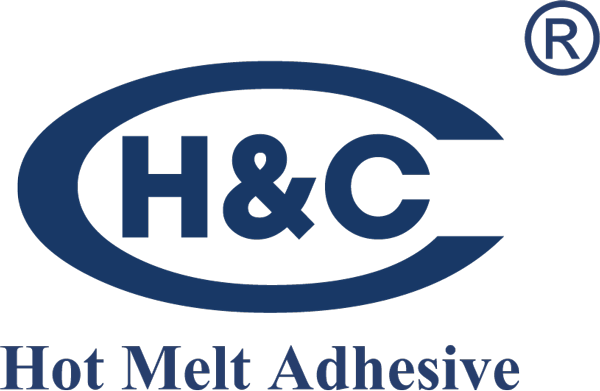

Understanding the shelf life of hot melt adhesives is essential for maintaining product quality, minimizing waste and ensuring reliable bonding performance in manufacturing environments. This article explores how long hot melt adhesives can last, the factors that influence their durability, proper storage practices and practical guidelines to ensure optimal performance throughout their usable life.
Hot melt adhesives (HMAs) are thermoplastic materials that are solid at room temperature, melt when heated, then cool to form a bond. According to multiple sources, the typical shelf life of hot melt adhesives ranges between 12 to 24 months, depending on formulation and storage conditions.
Some manufacturers even claim that under optimal storage (sealed packaging, cool and dry environment, no exposure to UV or moisture) the shelf life may approach “indefinite.”
The following table summarises typical shelf-life expectations by adhesive chemistry:
| Adhesive Type | Typical Shelf Life* | Main Degradation Risks |
|---|---|---|
| EVA (Ethylene-Vinyl Acetate) | 12–24 months | Heat, oxidation, UV exposure |
| PA (Polyamide) | 12–18 months | Moisture absorption, oxidation |
| PES (Polyester) | 12–18 months | Moisture, oxidation, brittleness |
| APAO (Amorphous Poly-Alpha-Olefin) | 18–24 months | Heat, oxidation (relatively more stable) |
Under “ideal storage conditions” (cool, dry, original packaging, minimal exposure). Note: These are guidelines. Actual usable life will depend on the exact formulation, manufacturer instructions and storage conditions.
Several inter-related factors impact how long a hot melt adhesive remains fully functional.
Storage Environment Temperature and humidity play a critical role. Higher temperatures accelerate oxidation of the polymer and reduce performance. Likewise, high humidity or moisture exposure can degrade adhesives (especially PA and PES types) via hydrolysis or foaming when remelted.
Packaging & Exposure Original, sealed packaging protects adhesives from oxygen, dust, moisture and UV light. Once opened or exposed, the degradation process accelerates. For best results, adhesives should be used following the first-in-first-out (FIFO) principle.
Formulation & Chemistry Different adhesive chemistries behave differently over time. For example, PA adhesives are more moisture sensitive compared to EVA or APAO. Choosing the right formulation for storage conditions and application is key.
Application Conditions Even if stored properly, improper application (e.g., overheated adhesive, substrate contamination, or exposure to harsh environments) can shorten the effective service life of the bond. While this is not shelf life per se, it affects the overall durability and reliability of the adhesive in use.
To maximise the usable life of hot melt adhesives, adhere to the following storage guidelines.
Temperature control
Store adhesives at a stable temperature, ideally between 10 °C and 25 °C.
Avoid storing near heat sources, direct sunlight or in high temperature zones.
Avoid extreme cold if adhesive becomes brittle—but the larger concern is elevated temperature causing oxidation.
Humidity and moisture protection
Especially important for PA and PES adhesives.
Use humidity-controlled storage if your facility is in a humid environment.
Keep adhesives away from steam lines, open doors or areas prone to condensation.
Packaging integrity
Maintain adhesives in their original, sealed packaging whenever possible.
If repackaging, use airtight, moisture-proof containers.
Label each batch with manufacturing date or delivery date and adhere to FIFO.
Inventory management
Avoid over-stocking adhesives unless you are certain of storage conditions and usage rate.
Track age of stock and schedule usage so older stock is used first.
Inspect regularly for signs of discoloration, hardening, clumping or odd odours.
Environment exposure minimisation
Store away from UV-light sources and direct sunlight.
Avoid dusty, oily or chemically active storage areas because contamination can accelerate degradation.
After opening a package, reseal it properly to limit air and moisture ingress.
Even with the best storage, adhesives may degrade. Recognising early warning signs prevents production issues.
Visual changes – Darkening or yellowing of the adhesive might indicate oxidation.
Processing issues – Excessive stringing, foaming, smoking, or uneven melting may signal moisture contamination or polymer breakdown.
Bond failure – Reduced tack, weaker bonds, delamination or unexpected failures during production or in service indicate compromised adhesive. If any of the above appear, treat the batch as questionable and consider testing or replacing it rather than risking production downtime.
Align purchase volume with usage rate so adhesives are used well within their expected shelf life.
Select appropriate adhesive type for your storage environment. If storage conditions are less than ideal (e.g., high humidity or heat), then more stable formulations or tighter inventory turnover may be warranted.
Batch traceability is important: Note manufacturing dates, lot numbers and storage conditions to evaluate any issues retrospectively.
Quality control: Prior to use, sample adhesives for viscosity, tack and bonding performance, especially for batches nearing 12–24 months.
Supplier collaboration: Engage with trusted manufacturers who provide clear shelf-life statements and technical support.
When sourcing high-quality hot melt adhesives, you may want to consider HUACHUN. Founded in 1998, the company specialises in developing, producing and marketing environmentally friendly hot melt adhesives. Their product portfolio includes hot melt glue sticks, pellets and blocks spanning EVA, PO, PA and APAO systems. The company emphasises strict testing procedures and stable product quality. For manufacturers looking for reliable adhesive supply with clear technical information on storage, shelf life and application, HUACHUN offers a strong option.
In conclusion, the shelf life of hot melt adhesives is typically between 12 and 24 months under proper storage conditions, though in exceptional circumstances with ideal storage the life may be longer. Storage conditions, packaging, chemistry, inventory practices and contamination control all influence actual usable life. By following best practices for storage and inventory management, manufacturers can ensure consistent adhesive performance, reduce waste, avoid downtime and maintain product quality. If you are sourcing adhesives and looking for a trustworthy supplier, HUACHUN represents a viable choice with solid technical backing and experience in the hot melt adhesive industry.